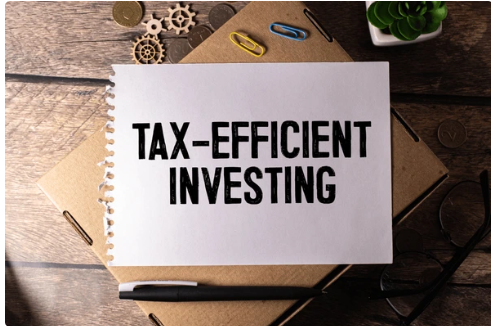Myths About Mutual Funds Indian Investors Should Stop Believing
Mutual funds have become a popular investment choice for many Indians, but there are still several misconceptions surrounding them. These myths often discourage potential investors or lead them to make wrong decisions. It’s essential to debunk these myths and help people understand the reality so that they can make informed investment choices. In this blog, we’ll discuss some common myths about mutual funds that Indian investors should stop believing. Myth 1: Mutual Funds Are Risky for Everyone Many people think that mutual funds are extremely risky, and this myth often scares them away from investing. While it’s true that mutual funds carry some risk, not all funds are the same. There are different types of mutual funds, each with its own risk level. For example, equity mutual funds are more volatile, but debt mutual funds are relatively safer. The key is to choose the right type of mutual fund based on your risk tolerance and financial goals. Proper research or consulting with a financial advisor can help you make the right choice. Myth 2: You Need a Lot of Money to Invest in Mutual Funds Another widespread misconception is that mutual funds require a large sum of money to invest. This is far from the truth. In fact, you can start investing in mutual funds with as little as ₹500 through a Systematic Investment Plan (SIP). SIPs allow you to invest small amounts at regular intervals, making it accessible to individuals from all income groups. This flexibility makes mutual funds a viable option for even small investors who want to gradually build wealth over time. Myth 3: Only Experts Can Invest in Mutual Funds Many people believe that mutual funds are too complicated and should be left to experts. While mutual funds may seem intimidating at first, they are designed to be a simple and efficient way for everyday people to invest. Mutual funds are managed by professional fund managers, so you don’t need to be an expert to invest. The fund manager takes care of the investment decisions, allowing you to benefit from their expertise. With the help of financial advisors or online platforms, even beginners can easily invest in mutual funds. Myth 4: Mutual Funds Only Invest in Stocks Some investors think that mutual funds are only about investing in the stock market. This is a common myth, but mutual funds invest in a wide range of assets, not just stocks. There are different types of mutual funds like equity funds (which primarily invest in stocks), debt funds (which invest in fixed-income securities), hybrid funds (a mix of equity and debt), and even money market funds. This variety allows investors to choose a fund that aligns with their risk appetite and investment goals. Myth 5: Mutual Funds Offer Guaranteed Returns One of the most dangerous myths is that mutual funds provide guaranteed returns. Mutual funds are market-linked investments, meaning their returns depend on market performance. While they have the potential to offer higher returns than traditional investments like fixed deposits, they do not guarantee profits. It’s essential to understand that mutual funds carry risk, and returns can fluctuate based on market conditions. Long-term investing in mutual funds, however, has historically shown to yield good returns, especially in equity-oriented funds. Myth 6: Mutual Funds Are for the Short Term Many investors believe that mutual funds are only suitable for short-term investment goals. This myth often leads to disappointment when investors pull out their money too soon or without a clear understanding of their investment horizon. While some funds are suited for short-term goals, like liquid or debt funds, many mutual funds are ideal for long-term goals. Equity funds, for example, are known to provide better returns over the long term. Therefore, it’s crucial to match your investment horizon with the type of mutual fund you select. Myth 7: All Mutual Funds Are the Same It’s a common belief that all mutual funds are the same and will provide similar returns. However, mutual funds come in various types and cater to different financial goals and risk appetites. There are large-cap, mid-cap, small-cap funds in the equity category, and there are government bonds, corporate bonds, and money market funds in the debt category. Each fund has a different risk-return profile, so choosing the right fund that fits your investment objective is essential. Always do thorough research before selecting a mutual fund to invest in. Myth 8: You Can’t Withdraw Your Money Easily Some investors are hesitant to invest in mutual funds because they believe their money will be locked up for years. This is another myth that prevents people from taking advantage of mutual funds. While certain types of funds, like Equity Linked Saving Schemes (ELSS), have a lock-in period, most other mutual funds offer liquidity. Open-ended mutual funds allow you to redeem your units at any time, which means you can withdraw your money when needed. However, it’s essential to understand that exiting a fund too early might result in lower returns or exit load charges. Myth 9: Higher Returns Always Mean Better Funds Another common misconception is that the mutual fund with the highest returns is the best option. While returns are important, they shouldn’t be the only factor in choosing a mutual fund. High returns often come with higher risks, and not all investors are equipped to handle those risks. Additionally, past performance doesn’t guarantee future returns. Instead of focusing solely on returns, consider other factors like the fund’s risk profile, consistency, expense ratio, and how well it aligns with your financial goals before making a decision. Conclusion Investing in mutual funds can be a rewarding experience if done with the right knowledge and understanding. The myths surrounding mutual funds often create unnecessary fear and confusion. By debunking these myths, we can empower more people to take advantage of this versatile and accessible investment option. Whether you are a seasoned investor or just starting, it’s essential to approach mutual fund investments with a clear understanding of how
Myths About Mutual Funds Indian Investors Should Stop Believing Read More »











